|

-
TransAnatolie
TA3414
- 16 Day Cultural Tour in Turkey
- Istanbul-Western Turkey-Central Anatolia- Mediterranean
For Pricing Click Here or
Contac Us
Cultural and Natural Heritage Tour
with Blue Cruise in Turkey
Day 1:
Istanbul
Arrival in
Istanbul. Sightseeing city tour, dinner and overnight at our 4
star hotel.


Day 2:
Istanbul
In the morning, discovery of the Golden Horn and of the Pierre Loti
area. Visits to Ottoman Imperial Cemetery and Eyüp Mosque. Walks
along the Roman-Byzantine city walls and visit the Chora Church and
Mihrimah Sultan Mosque.
The great Mosque of Eyüp lies
outside the city walls, near the Golden Horn, at the supposed place
where Eyüp, the standard bearer of the Prophet Mohammed, died in the
Islamic assault on Constantinople in 670 A.D. The first mosque built
after the Ottoman conquest of the city, this greatly venerated
shrine attracts many pilgrims.
The Kariye Museum (Chora Church), the 11th century church of "St.
Savior" in Chora, is, after St. Sophia, the most important Byzantine
monument in Istanbul. Unremarkable in its architecture, inside, the
walls are decorated with superb l4th century frescoes and mosaics.
Illustrating scenes from the life of Christ and the Virgin Mary,
these brilliantly coloured paintings embody the vigour of Byzantine
art. Restored wooden houses in the area surrounding the church offer
tea and coffee in a relaxed, atmosphere far removed from the city's
hectic pace.
Walls of glass fill the four immense arches that support the central
dome at the Mihrimah Sultan Mosque inside the Edirne gate of the old
city walls. One hundred and sixty-one windows illuminate this
mosque, built by Sinan for Mihrimah Sultana, the daughter of
Süleyman the Magnificent in 1555.
Lunch is next to the Roman Circus in a well known Turkish-Greek
restaurant.
Afternoon: We visit
Aya Sophia
(Hagia Sophie) and
Topkapi Palace
Museums and end up at the Grand Bazaar. Free dinner and
overnight at the hotel.


The Basilica of St.
Sophia, now called the
Ayasofya Museum, is unquestionably one of the finest buildings
of all time. Built by Constantine the Great and reconstructed by
Justinian in the 6th century, its immense dome rises 55 meters above
the ground and its diameter spans 31 meters. You should linger here
to absorb the building's majestic serenity and to admire the fine
Byzantine mosaics.


On a spot of land at
the confluence of the Bosphorus, the Golden Horn and the Marmara
Sea, stands
Topkapi Palace, a maze of buildings at the center of the Ottoman
Empire between the 15th and 19th centuries. In these opulent
surroundings the sultans and their court lived and governed. A
magnificent wooded garden fills the outer, or first, court. To the
right of the second court, shaded by cypress and plane trees, stand
the palace kitchens, now galleries exhibiting the imperial
collections of crystal, silver and Chinese porcelain. To the left,
the Harem, the secluded quarters of the wives, concubines and
children of the sultan, charms visitors with echoes of a centuries
old intrigue.
Today, the third court holds the Hall of Audience, the Library of
Ahmet III, an exhibition of imperial costumes worn by the sultans
and their families, the famous jewels of the treasury and a
priceless collection of miniatures from medieval manuscripts. In the
center of this innermost sanctuary, the Pavilion of the Holy Mantle
enshrines the relics of the Prophet Mohammed brought to Istanbul
when the Ottomans assumed the caliphate of Islam
The cascading domes and four slender minarets of Süleymaniye Mosque
dominate the skyline on the Golden Horn's west bank. Considered the
most beautiful of all imperial mosques in Istanbul, it was built
between 1550 and 1557 by
Sinan, the renowned architect of the Ottoman golden age. On the
crest of a hill, the building is conspicuous by its great size,
which the four minarets that rise from each corner of the courtyard
emphasize. Inside, the mihrab (prayer niche) and the mimber (pulpit)
are of finely carved white marble; fine stained glass windows color
the incoming streams of light. It was in the gardens of this complex
that Süleyman and his wife Hürrem Sultan, Roxelane, had their
mausolea built, and near here also that
Sinan built his own tomb.
The mosque complex also includes four medrese, or theological
schools, a school of medicine, a caravanserai, a Turkish bath, and a
kitchen and hospice for the poor.
We dine at Istanbul By Night at Kumkapi and overnight at the 4 star hotel with high QoS.

Day 3: Istanbul
In the morning, visit the Hippodrome, Turkish and Islamic Arts
Museum located at the
Ibrahim Pascha
Palace, ass well as the
Ethnographical Museum in Istanbul.
Not to forget to explore the Master Piece Blue Mosque.
The dark stone building that houses the
Museum of Turkish and Islamic Art was built in 1524 by
Ibrahim Pasa; Grand Vizier to Süleyman the Magnificent, as his
residence. It was the grandest private residence ever built in the
Ottoman
Empire. Today, it houses a superb collection of ceramics,
metalwork miniatures, calligraphy, textiles, and woodwork as well as
some of the oldest carpets in the world.
Then we visit the
sixth century
Byzantine
citern known as the Yerebatan Sarnici. Three hundred and thirty-six
massive Corinthian columns support the immense chamber's fine brick
vaulting.
Walking along the
Sultan Ahmet Square we arrive in the famous
Blue Mosque. Facing St. Sophia
stands the supremely elegant, six-minaret, imperial Sultanahmet
Mosque. Built between 1609 and 1616 by the architect Mehmet, the
building is more familiarly known as the Blue Mosque because its
interior gleams with a magnificent paneling of blue and white Iznik
tiles. During the summer months an evening light and sound show both
entertain and inform.
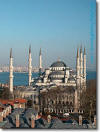

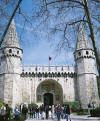
Before lunch we become familiar with Turkish
Cultural Products:
carpets
and kilims, jewellery and leather. Delicious lunch is at the Mesopotamian restaurant.
Afternoon: visit the Egyptian and Second-hand markets.
We then fully enjoy the wonderful Bosporus Cruise between two
continents Asia and Europe,
A stay in Istanbul is not complete without the traditional and
unforgettable boat excursion up the Bosphorus, the winding strait
that separates Europe and Asia. Its shores offer a delightful
mixture of past and present, grand splendor and simple beauty.
Modern hotels stand next to yali (shorefront wooden villas), marble
palaces abut rustic stone fortresses, and elegant compounds
neighbour small fishing villages. During the journey, you pass in
front of the magnificent Dolmabahçe Palace; farther along rise the
green parks and imperial pavilions of Yildiz Palace. On the edge of
this park, on the coast, stands Çiragan Palace, now restored as a
grand hotel. Refurbished in 1874 by Sultan Abdülaziz, it stretches
for 300 meters along the Bosphorus shore, its ornate marble facades
reflecting the swiftly moving water. In Ortaköy, the next stop,
artists gather every Sunday to exhibit their works in a streetside
gallery. The variety of people create a lively scene; sample a
delicious bite from one of the street vendors. In Ortaköy, there is
a church, mosque and a synagogue that have existed side by side for
hundreds of years - a tribute to Turkish secularism and tolerance.
Overshadowing Istanbul's traditional architecture is the Bosphorus
Bridge, one of the world's largest suspension bridges linking Europe
and Asia.
We finally dine and enjoy the night
at our 4 star hotel with high QoS.
Day 4:
Istanbul
Morning: visit the Citern-Basilica,
Istanbul Archaeological Museum and Oriental Antiques Museum in Cinili
Kosk. Then cruise on the Bosporus via the suspension bridge to have lunch in
the Asian part of Istanbul; the Fenerbahce area.
 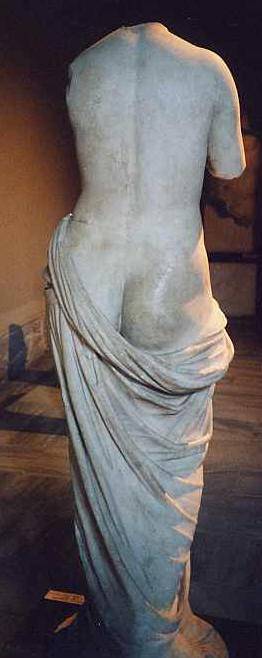 
The Archaeological Museums are
found just inside the first court of Topkapi Palace. Included among
the displays are the celebrated Alexander Sarcophagus among its
treasures of antiquity.
The Museum of the Ancient Orient displays artifacts from the
Sumerian,
Babylonian,
Assyrian,
Hatti and
Hittite civilizations.
Originally built as a kösk or pavilion by Mehmet the Conqueror in
the 15th century, the Çinili Kösk, which houses the Museum of
Turkish Ceramics, contains beautiful Iznik wares from the 16th
century and fine examples of
Seljuk and
Ottoman
pottery and tiles
Afternoon: discovery of the Beylerbeyi Ottoman Imperial
Palace. Walk up to the Camlica Hill: higher point of the city: Back
to Europe in the hotel. Free dinner and evening.
In the 19th century, Sultan
Abdülaziz built the Beylerbeyi Palace, a fantasy in white marble
amid magnolia filled gardens, on the Bosporus's Asian Shore. Used
as the Sultan's summer residence, it was offered to the most
distinguished foreign dignitaries during their visits. Empress
Eugenie of France was among its residents
Day 5:
Izmir-Ephesus-Pamukkale
After a rich Turkish Breakfast,
transfer to Istanbul Airport to fly to Izmir (Smyrna).

Drive early in the morning towards
Ephesus;
the
capital of
Ionia, home-town of
Heraclite. Note that Ephesus is one of the wholly places where one of the first 7
churches of the Apocalypse of St John is located.
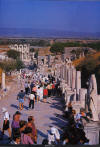
 We discover the
Ephesus site, the
Eastern Academy, Agoras, Stoa, the street of Curetes, the Gate of Esculape, the
Odeon, the market place of Domitien, the Monument of Memius, the Fountain of
Trajane dated from the Pax Romana period, the Baths, the Hadrianus Temple, the
House of the Worthy, the Library of Celcus, the Closed Houses, Marble Street,
the Agora of Demos, the St Paul Theater, Arcadian Street, the Church of the
Virgin Marry of the Ecumenical Councils, the Roman Stock Exchange and the Antique
Harbour. Stop in a leather factory. (see
Ephesus Museum) We discover the
Ephesus site, the
Eastern Academy, Agoras, Stoa, the street of Curetes, the Gate of Esculape, the
Odeon, the market place of Domitien, the Monument of Memius, the Fountain of
Trajane dated from the Pax Romana period, the Baths, the Hadrianus Temple, the
House of the Worthy, the Library of Celcus, the Closed Houses, Marble Street,
the Agora of Demos, the St Paul Theater, Arcadian Street, the Church of the
Virgin Marry of the Ecumenical Councils, the Roman Stock Exchange and the Antique
Harbour. Stop in a leather factory. (see
Ephesus Museum)
Lunch is in
Ephesus,
the capital of
Ionia and
the city of Artemis.
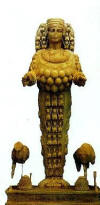
In the afternoon, Pamukkale Castles next to the Hieropolis site are explored. Here women were
committing suicide, after
their husbands deaths, to demonstrate their love and loyalty to their husbands.
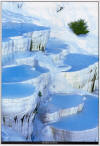
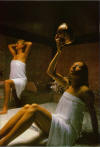
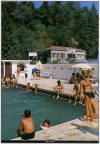
Dinner and overnight in our
hotel. Thermal swimming pool with Jacuzzi is at our service.

Day 6:
Pamukkale-Konya-Cappadocia
Early in the morning drive from
Pamukkale to Konya; enjoy the nature and
beauty of landscape and visit Caravanserai of Horozluhan. Lunch on the
Silk Road.
In the afternoon, in Konya, the Turkish
and Islamic Arts Museum, the
Mevlana Mausoleum
and
Museum of the founder of the Dancing
Dervishes are explored. Here one finds a rich collection of ethnographical works, including one of
the few Turkish carpets in the world dated of 16th century (each cm2 contains
144 double knots). In the late afternoon, arrival in
Acemhoyuk, the first
capital of Ancient
Hittites and visit Sarikaya and Hatiplar Palaces.
Dinner and overnight in
Aksaray, at Agacli Motel (4*) or at Eras Hotel (5*).
Day 7:
Cappadocia:
Aksaray-Selime-Ihlara-Saratli
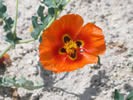
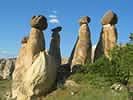
After a delicious Turkish
breakfast, the Seljuk city of Karamanoglu, Aksaray is explored: exceptional Pizze Tower and The Great Mosque from the 13th
century. Walk through the Melendiz Canyon and visit typical Anatolian villages Selime, Yaprakhisar, Belisirma and arrive in the Peristrema-Ihlara Valley
and
discover primitive Syriaq churches dated from the 1st period of the
Christian campus in Cappadocia. Possibility to walk in nature for those who love
nature and birds.
Lunch is at the Melendiz Canyon in
Ihlara. In the late afternoon, pay a visit to the underground town of Saratli,
the town of
Simone and Jean van Delft.
Dinner and overnight in our hotel
in Cappadocia.
Day 8:
Cappadocia
"The land of
beautiful horses..."
"The holly land of Christians..."
"The heartland of Anatolia... "
 The beauty of the unique
landscapes of
Cappadocia (valleys, fairy chimneys with caps) carved during
ages by the nature-air, flood water and the fire of the volcanic
mountains (Mt. Erciyes, Mt Hasan, Mt. Gollu) is spectacular. Light
and time sensitive, continuously colour changing capped chimneys,
curved paths along the trees, cultural heritages of Christians, Jews
and Muslims decorated with natural coloured icons and dugout in
rocks, animated by Saint Basile in Kayseri, Saint Gregoire in
Nevsehir, Haci Bektas Veli in Haci Bektas... The beauty of the unique
landscapes of
Cappadocia (valleys, fairy chimneys with caps) carved during
ages by the nature-air, flood water and the fire of the volcanic
mountains (Mt. Erciyes, Mt Hasan, Mt. Gollu) is spectacular. Light
and time sensitive, continuously colour changing capped chimneys,
curved paths along the trees, cultural heritages of Christians, Jews
and Muslims decorated with natural coloured icons and dugout in
rocks, animated by Saint Basile in Kayseri, Saint Gregoire in
Nevsehir, Haci Bektas Veli in Haci Bektas...
A trip of this nature of its own
unique character gives you the opportunity to discover the cultural
richness of this area and enables you to interact with each other
and with the hospitable local inhabitants
After breakfast, we visit the
old Troglodyte houses of Urgup, Uc Guzeller, the Pigeons Valley, Uchisar,
Avcilar, the Goreme Valley and its Rupestrian churches.
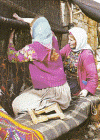
Lunch at the hotel or at the
buffet Koru. In the afternoon, possibility to relax and discover different
handworks (carpets). Dinner and overnight in our hotel in Cappadocia.

Day 9:
Cappadocia-Lake Beysehir-Mount Taurus-Antalya
Early in the morning, after
breakfast in Cappadocia, we drive towards Antalya. Time out for
Turkish Tea along the Lake Beysehir and visit the Beysehir Mosque-a
famous sample of
Seljuk architectural heritage. Proceed through the
Taurus Mountains and enjoy the nature and beauty of landscape with
poppy fields, nomads and goats.



Lunch is on the way to
Antalya.
Imaginations, admirations and
confused feelings are interleaved as we walk
through the small streets of Antalya and see the small houses of the poor
fishermen in the old harbour while also looking at the Gulets of the Turkish
aristocrats and at the Hellenistico-Roman-Byzantine-Seldjoukid-Ottoman-Turkish
monuments.
Dinner and overnight in
Antalya, the city of Attale
(cousin of
Alexander the Great).
Day 10:
Explore Antalya Region
Kursunlu waterfalls,
Perge and Ancient Aspendos Theatre are explored. Lunch is in a
restaurant along the Aspendos River.
Diner and overnight at our
hotel in Antalya.
Day 11: Blue
Cruise in Antalya Region
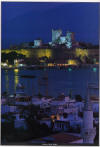
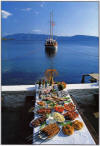
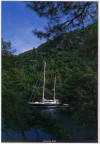
Sailing Paradise: Turkey
The azure waters of the Mediterranean, the Aegean, and the Black
Sea, as well as the Sea of Marmara, surround Turkey to the south,
west and north.
Full day Blue Cruise
with lunch in Antalya region. Diner and overnight at our
hotel in Antalya.
Day 12: Blue
Cruise in Kemer-Phaselis
After breakfast, we
enjoy full day Blue Cruise
with lunch in Kemer-Phaselis region. Diner and overnight at our
hotel in Antalya.
Day 13: Blue
Cruise in Antalya-Myra-Saint Nicolas-Kekova
In the morning, after breakfast at
our hotel, we drive to Myra, explore Myra, Saint Nicolas and onwards Blue Cruise covering Kekova region. The cruise is around 3 hours.
Subsequently, we drive back to Antalya for diner and overnight in our hotel
Day 14: Blue
Cruise in Alanya
In the morning, after breakfast at
our hotel, we drive to Alanya, explore Alanya and Alanya Castle.
Afterwards Blue Cruise
(with lunch on board) covering Alanya region. Diner and overnight is at our hotel
in Antalya.
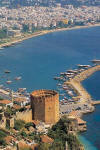
Day 15: Blue
Cruise Fethiye
After breakfast, the group drives to Fethiye
and explores Kas, Xsantos, Letoon and Fethiye; Lunch is in Fethiye.
Diner and overnight is at our hotel in Fethiye. (Or, in the evening
transfer to the boat for Blue Cruise in Fethiye, Gocek and surroundings
for one week, option).
Day 16: Istanbul-Europe
After breakfast, free time until
transfer to the Istanbul airport. (Or Blue Cruise in Fethiye and
surroundings continued for one week).
Pricing
Options
- Cruise on the Bosphorus
-
Istanbul by Night
-
Evening with fishermen +
Istanbul by Night
- Evening with typical dances
in Cappadocia
- Discovery of Cappadocia in
hot air balloon
- Evening with Dancing Dervishes
-
Special Dinner with show at the
Caravanserai Night Club at Galata Tower or at the
Orient House Istanbul.
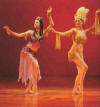
Optional visits
-
Dolmabahce Palace
- Free Lunch in Mata Hari area in Galatasaray
- Visits Beyoglu, Galatasaray
Rates Include
- Transportation in Turkey:
air-conditioned bus Mercedes Sprinter, WW Wolt, Mercedes 304-403, Mitsubishi
Safir, Isuzu Minibus-Turquoise
-
Accommodation in Hotels: in Istanbul 4*, in
Canakkale 3 or 4*, in Boylat, Emet and Pamukkale 4*, in Selcuk-Kusadasi 4*,
in Antalya 4*, in Cappadocia 4*, in Ankara 3*+.
-
Lunches in traditional restaurants
- All admission fees for museums and sites mentioned
- Services of Professional
Certified Guide
Rates Exclude
- Flights Europe/Turkey/Europe
- Airport taxes
-
Drinks
-
Insurance
-
Tips

TransAnatolie
Tour, Cultural, Biblical and Health Tours Provider and Operator
Top
|
Further Information
|
Reservation
|For
Pricing Click Here
Click on the hypertext
links to read more on
Roxelana1
Roxelana,
Roxolana, Roxelane, Rossa, Ruziac, known also by her Turkish name of
Hürrem (or Khourrem or Karima), meaning "the cheerful one", (c. 1510
- April 18, 1558) [1][2] was the Ukrainian ("Ruthenian" in the
terminology of the day) and only legal wife of the Ottoman sultan
Süleyman the Magnificent2 of the Ottoman Empire. Sixteenth century
sources are silent as to her maiden name, but much later Ukrainian
and Polish traditions, especially Ukrainian folk traditions first
recorded in the nineteenth century, give it as Anastasia
(diminutive: Nastia) or Aleksandra Lisovska.
Early life
According to late sixteenth century and early seventeenth century
sources like the famous Polish poet, Samuel Twardowski, who actually
did research on the subject in Turkey, Hürrem was born to a father
who was a Ukrainian, or Ruthenian, Orthodox priest, in the town of
Rohatyn which is located 68 km, south east of Lviv, a major city of
Galicia which was then part of the Kingdom of Poland, today in
western Ukraine. She was captured by Crimean Tatars during one of
their frequent raids into this region and taken as a slave, probably
first to the Crimean city of Kaffa (Kefe in Turkish, Caffa in
Italian), a major centre of the slave trade, then to Istanbul, and
was selected for Süleyman's Harem. She quickly came to the attention
of her master, and attracted the jealously of her rivals. One day
Süleyman's former favorite, the concubine Mahidevran, also called "Gul
Bahar" (The Flower of Spring), got into a fight with Hürrem and beat
her badly. Upset by this,Süleyman sent Mahidevran away from Istanbul
to the provincial capital of Manisa together with her son, the heir
apparent, Prince Mustafa. Thereafter, Hürrem became Süleyman's
unrivalled favorite or Haseki. Many years later, probably at the
instigation of Hurrem, the Sultan ordered Mustafa to be strangled.
Marriage
Hürrem's
influence over the Sultan soon became legendary; she was to bear
Süleyman five children and, in an astonishing break with tradition,
eventually was freed and became his legal wife. This strengthened
her position in the palace and eventually led to one of her sons,
Selim inheriting the empire. Hürrem also may have acted as
Süleyman's advisor on other matters of state, and seems to have had
an influence upon foreign affairs and international politics. Two of
her letters to the Polish King Sigismund Augustus have been
preserved and during her lifetime, the Ottoman Empire generally had
peaceful relations with the Polish state. Some historians also
believe that she may have intervened with her husband to control
Crimean Tatar slave-raiding in her native land.
Charities
Aside from her political concerns, Hürrem engaged in several major
works of public buildings, from Mecca to Jerusalem, perhaps modeling
her charitable foundations in part after the caliph Harun
al-Rashid's consort Zubaida. Among her first foundations were a
mosque, two koranic schools, a fountain, and a women's hospital near
the "Women's Slave Market" (Avret Pazary) in Istanbul. She also
commissioned a bath, the Haseki Hürrem Sultan Hamamı, to serve the
community of worshipers in the nearby Hagia Sophia. As well, some of
her embroidery, or at least embroidery done under her supervision,
has survived, examples being given in 1547 to the Shah of Iran and
in 1549 to King Sigismund Augustus.
Death
Hürrem
died on April 18, 1558. She is buried in a domed mausoleum (türbe)
decorated in exquisite Iznik tiles depicting the garden of paradise,
perhaps in homage to her smiling and joyful nature. Her mausoleum is
adjacent to Süleyman's, a separate and more somber domed structure,
at the Süleymaniye Mosque.
Hürrem, or Roxelana, as she is better known in Europe, is well-known
both in modern Turkey and in the West, and is the subject of many
artistic works. She has inspired paintings, musical works (including
Joseph Haydn's Symphony No. 63), an opera by Denys Sichynsky, a
ballet, plays, and several novels written mainly in Ukrainian, but
also in English, French, and German (Wikipedia).
Top
 Suleiman
I (Ottoman Turkish:
سليمان Sulaymān, Turkish: Süleyman; formally Kanuni Sultan Süleyman
in Turkish) (November 6, 1494 September 5/6, 1566), was the tenth
and longest‐serving Sultan of the Ottoman
Empire, reigning from 1520 to 1566. He is known in the West as
Suleiman the Magnificent and in the Islamic world, as the Lawgiver
(in Turkish Kanuni; Arabic: القانونى, al‐Qānūnī),
deriving from his complete reconstruction of the Ottoman legal
system. Within the empire, Suleiman was known as a fair ruler and an
opponent of corruption. As well as being a capable goldsmith and
distinguished poet, Suleiman was also a great patron of artists and
philosophers, overseeing the golden age of the Ottoman Empire's
cultural development. Suleiman
I (Ottoman Turkish:
سليمان Sulaymān, Turkish: Süleyman; formally Kanuni Sultan Süleyman
in Turkish) (November 6, 1494 September 5/6, 1566), was the tenth
and longest‐serving Sultan of the Ottoman
Empire, reigning from 1520 to 1566. He is known in the West as
Suleiman the Magnificent and in the Islamic world, as the Lawgiver
(in Turkish Kanuni; Arabic: القانونى, al‐Qānūnī),
deriving from his complete reconstruction of the Ottoman legal
system. Within the empire, Suleiman was known as a fair ruler and an
opponent of corruption. As well as being a capable goldsmith and
distinguished poet, Suleiman was also a great patron of artists and
philosophers, overseeing the golden age of the Ottoman Empire's
cultural development.
Suleiman was considered one of the
pre‐eminent
rulers of 16th century Europe. Under his leadership, the Ottoman
Empire became among the worlds' foremost powers. Suleiman personally
led Ottoman armies to conquer Belgrade, Rhodes, and most of Hungary,
laid the Siege of Vienna, and annexed most of the Middle East and
huge territories in North Africa as far west as Algeria. For a short
period, Ottomans achieved naval dominance in the Mediterranean Sea,
Red Sea, and Persian Gulf. The Ottoman Empire continued to expand
for a century after his death...Read
more
Top
|



































